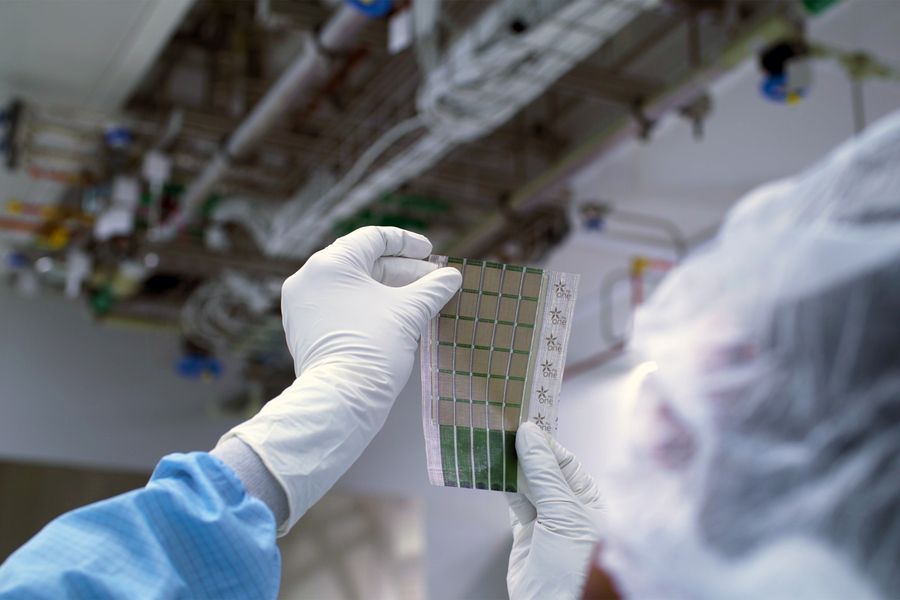[ad_1]

With the ability demand of gaming persevering with to rise, renewable vitality is much more vital. And never solely from an environmental perspective—having photo voltaic panels on my home is half the explanation I can afford to run all my bizarre electronics. We will even doubtlessly harness vitality from any warmth supply utilizing inverted photo voltaic panels (opens in new tab). The way forward for a high-tech house is undoubtedly powered at the very least partly by photo voltaic vitality, and now that future is coming to materials.
Researchers at MIT (opens in new tab) have developed a paper-thin photo voltaic cell that may be added to any floor. Due to the light-weight and versatile nature, this implies materials, and that has the potential to open up a world of prospects. Consider wearables that do not must be charged, battery jackets, tents that energy themselves, photo voltaic sails on precise boats. In fact, there are some hurdles that must be overcome first.
The most important one is safety. Consider the photo voltaic cell like a squishy solar mage that wants somebody taking part in tank or some form of protecting barrier to assist shield it from the, effectively, actually the whole lot. Often that is finished with thick glass, which clearly is not perfect for a versatile panel, so the group remains to be working to unravel this problem.
“Encasing these photo voltaic cells in heavy glass, as is normal with the normal silicon photo voltaic cells, would decrease the worth of the current development, so the group is presently growing ultrathin packaging options that might solely fractionally enhance the burden of the current ultralight gadgets,” defined MIT analysis scientist Jeremiah Mwaura.
“We’re working to take away as a lot of the non-solar-active materials as doable whereas nonetheless retaining the shape issue and efficiency of those ultralight and versatile photo voltaic buildings. For instance, we all know the manufacturing course of will be additional streamlined by printing the releasable substrates, equal to the method we use to manufacture the opposite layers in our system. This may speed up the interpretation of this know-how to the market,” he added.
Apart from that, these cells wish to be a brilliant promising step in photo voltaic know-how. Not solely are they skinny and light-weight sufficient to be laminated onto just about any floor, additionally they give a fairly large bang for the buck in terms of energy return. Checks thus far have indicated they generate about 18 instances extra power-per-kilogram than common photo voltaic cells, although this may change relying on the material and masking.
Whereas they do want safety from the weather, the cells seem like fairly sturdy in terms of flexibility and use. When connected to Dyneema cloth thee photo voltaic cells retained greater than 90 % of their preliminary energy era capabilities even after being rolled and unrolled over 500 instances.
And maybe crucial factor about this new tech is it is scalable. We have seen teeny-tiny photo voltaic earlier than, however it’s usually made with costly processes which are solely good for experimentation. These modules use a course of just like display screen printing a T-shirt.
As with all tech that will get me this excited, there isn’t any timeframe for after we can anticipate to see it commercially used. Whereas promising, loads of this tech will get caught in analysis or hits a pot gap finally. I have been dreaming of graphene batteries (opens in new tab) for years now, they usually’d work nice with these versatile panels, if both ever sees the sunshine of day.
[ad_2]
Source link


